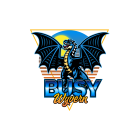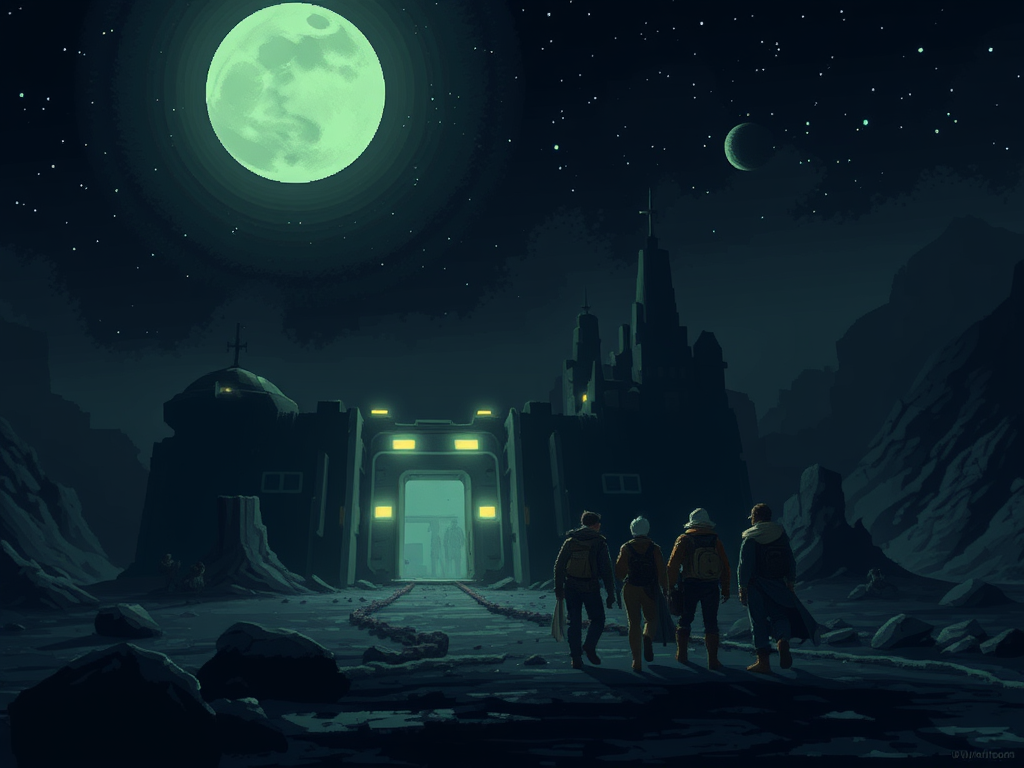Product: Wastes of Chaos, Tales from the Wastes
Author: Richard Green, Tim Hitchcock, Sarah Madsen, et al
Publisher: Kobold Press
System: Dungeons & Dragons Fifth Edition (5e)
Summary: Wastes of Chaos:
Venture beyond the civilized world into the howling badlands where villainous cults do as they please and ancient constructs lie buried beneath the dust. Heroes brave enough to embrace arcane corruption can unearth great riches, forgotten magic, and powerful secrets—or a swift demise.
Wastes of Chaos brings you everything you need to create hard-hitting adventures in ruined lands, including:
- Details on chaos magic, corrupted locales, fiendish cults, and ancient treasures
- 4 playable races and subraces, including automatons, dust goblins, and wasteland dragonborn
- 8 subclasses, such as the doombringer fighter, way of chaos monk, and the wasteland ranger
- 4 wasteland factions and their followers, including the Cult of the Black Goat and the Chaos Reavers
- 38 new creatures, including the eldritch horror and the chaos drake
- Plus full-color maps, new spells, magic items, and more!
Tales from the Wastes:
Enter devasted lands torn asunder by ghastly creatures and chaos magic. These wastes hide ancient treasures, potent magic, and abandoned cities waiting to be discovered—or refusing to stay buried. Tales from the Wastes brings you fast-paced 5th Edition adventures set in twisted locations packed with memorable NPCs.
Inside this tome, find:
- 15 new single-session adventures, suitable for levels 1–18, playable separately or in sequence
- New environmental hazards to face, mysteries to unravel, and encounters with terrifying villains
- 15 full-page, full-color maps and dozens of illustrations
- New monsters, NPCs, magic items, and easy prep for your next game!
Snap Judgement for Busy Wyverns: Paired together, these two books are a fantastic toolkit for any GM whose players are traversing any sort of magical wasteland. They, of course, fit neatly into Midgard’s Wasted West area, but can be easily forklifted into any magical wasteland in your campaign. Wastes of Chaos is very much a toolkit book and not a campaign setting, with lots of prompts and anchor points for further development. Tales from the Wastes is a great collection of set-piece encounters in the wastelands. Get them both if you have any fantasy wasteland adventures in mind – they’ll make sure your wastelands are not barren of incredible adventures.
What is it?
These two books are a pair of tomes that work to flesh out, mechanically and in detail, much of the Wasted West campaign locale in Kobold Press’ Midgard setting. Most of the flavor and setting information for the area is in the Midgard Worldbook – this is a more general and modular look at factions in the area, expanded subclasses and sub-species of creatures. You’ll also get some rules for magic malfunctions, some short location information, and some spells & treasure. This is not a campaign guide though, and it’s not an adventure book – there is no overarching storyline or throughline. It’s a toolkit for you to cobble together to build YOUR wasteland. There’s lots of adventure seeds and random tables for lots of different wasteland biomes – not just the stereotypical desert/badlands but also marshlands, hills, battlefields, etc. Many of these can be used for micro-wastelands in your campaign – they don’t need to be set with a massive wasted area.
Tales from the Wastes is a collection of short adventures, with hooks, NPCs, maps and lots of guidance for each one. These make for great short adventures to throw at your players, requiring minimal prep. This book makes everything easier, as you can prep in reverse from these as a starting point.
What makes it good?
If you’re running a game in a wasteland, this has everything you need – especially if you’re running in Midgard’s Wasted West. Lots of excellent ideas, frameworks for factions, some spells, treasure, etc. It’s all a great fit for the Midgard world – a gritty and dark fantasy setting. The new player race is a vat-grown bio-automaton. The Path of the Demon Barbarian subclass is a borderline Warlock/sentient evil item concept. The Circle of Dust Druid is mostly oriented towards surviving in the wastes, being “one” with the blasted land. The Doombringer, a fighter subclass, is a little bit like a Mandalorian/Death Knight hybrid. It isn’t required to be evil, but if it’s played as a hero, it’s in the grimdarkest way. The Way of Chaos Monk is essentially a wild magic monk. The Wasteland Rover, Ranger, is an interesting attempt at reworking the class into a scavenger/tinkerer/alchemical bomb class. We get a Rogue subclass called the Bandit Priest – it really feels like a rogue/cleric hybrid. We also get another Rogue subclass, the Chaos Cultist – a sort of rogue that leans heavy into manipulating luck. We could see this being fun to play. Finally the Demonic Tutor Warlock rounds out the new subclasses, and frankly it sounds like every other warlock to us. We just don’t understand the appeal of the class and have stopped trying. Evaluate that one on your own!
The new backgrounds all make sense for the setting and can help fit your standard classes into the world, but there’s just two, the Chaos Child and the Wasteland Reaver.
We like the faction, especially the Cult of the Black Goat – there’s enough information to place them in the world, and you get some leadership NPCs, but you’ll have to flesh them out a little more once the players start interacting. The Red Moon Bandit Gang is essentially a faerie/pixie outlaw club that harasses travelers. You don’t want to run into them. One thing we really did like is that each faction has a paragraph describing their goals if the party encounters them at Tiers 1, 2, 3 and 4. That way, they’re never too strong or weak – you can slot them into the story any time you want.
The locales are basically 2-page dungeon crawls and a suggested adventure hook. There’s not a lot of complicated NPC interaction points or goals – these are either meant to be single session challenges for the party, or exist to hold some plot macguffin. Always useful, but they’re not going to be the most exciting things the party encounters.
The Bestiary is a lot of fun, with 38 new creatures – a pretty good number for a book like this. We like a good selection of monsters for random encounters or just to really drive home the flavor of the setting. A dragon, cultists, mutated creatures, otherworldly beings – all the wasteland boxes are checked.
Three new types of spells are here – Ancient, Chaos and Doom magic. If you like wild magic, here’s more.
Lots of good magic items for wasteland games. And a solid appendix detailing what parts of the toolkit to use in Midgard locations
How do I use it?
First, run a game in a wasteland setting. Next, drop in all the stuff you think is cool, interesting or will entertain your players. Because of its modularity, very little of it requires any other part. Parts from both books can be used as micro-adventures in micro-locales if needed, or they can all exist in relatively close proximity to the players in a sandbox. These sorts of things really do spur our creativity when building a world.
Downsides
The Doom spells are a little odd – we’re not encyclopedic masters of the 5e spell canon, but some do seem very familiar, even redundant, to standard offerings. The flavor text says Doom magic involves sacrifice of the caster or the target, and a creeping sense of doom – but we don’t see anything in the spell descriptions that mechanically bears that out. Maybe we missed something?
A downside of all toolkit books is – you’re gonna have to do prep. They certainly lessen the prep and gather all your inspiration in one place, but a campaign, even a full adventure chapter, isn’t handed to you here. You get really good, large pieces of the puzzle, but it’s up to you to fit them together.
Final Thoughts
Having just reviewed Weird Wastelands, its essentially impossible to avoid comparing them. Weird Wastelands (WW) is much more light-hearted, fun-oriented setting compared to the Wasted West of Midgard. We think you could absolutely drop parts from Wastes of Chaos (WoC) into WW, but it’s a much taller order to drop WW into Midgard. It just doesn’t fit. Now that said, if you want a campaign setting ready to go out of the box, so to speak – WW is the product to get. It’s going to require far less work and prep on your part to immediately get the party running in a wasteland setting. Honestly we are a little sad we read WW first – we probably would have enjoyed WoC and Tales from the Wastes a bit more if we hadn’t. But having done so – the Kobold Press offering here just felt a little more hollow and flat than the vibrant adventures of WW. This is a case of something solid being overshadowed by something stellar.
Recommend or Not?
VERY conditional Recommend. We can only recommend these books if you’re running a campaign in a wasteland. There’s no stories in there that are fun to read, there’s not really any monsters or factions that have any business existing outside a wasteland. The magic and subclasses are highly focused on wasteland play. And since they do not present a campaign on their own – you’ll have to do a little work to come up with one to entice your players to spend any length of time in these sorts of places. That being said – if you’re running a campaign in a wasteland setting and need more meat on the bones of your game – these are great additions to your toolbox. And that goes double if you’re not running a Weird Wastelands campaign, since that book has just about everything you need for that campaign. This will add more to it, but WW feels full and complete on its own. If you want to darken up the WW world, then its a good idea to grab Wastes of Chaos and Tales from the Wastes.




